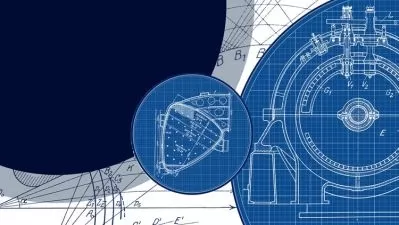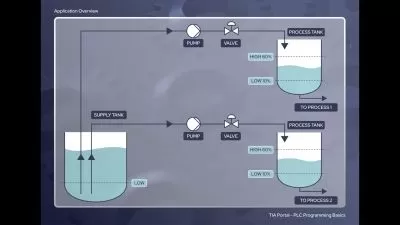Building a RISC-V SoC From Scratch!
Mohamed Nasser,Abdulaziz El-Safty,Ramy Rabie
6:04:45
Description
System-on-chips, SoC, integration, RTL, FPGA, RISC-V.
What You'll Learn?
- Learn the first principle of how complex computer chips work
- Learn how processors execute code from a very low level
- Learn the basics of FPGA design
- Learn RISC-V ISA
- Learn how to work with compilers using the command line
- Learn how use linker scripts and its basic syntax
- Hands on experience on designing your own custom RISC-V SoC, writing the software for it, simulating it and emulating it on FPGA
Who is this for?
What You Need to Know?
More details
DescriptionAre you eager to explore electronics or bridge a knowledge gap in System-on-Chip design? Maybe you're a hobbyist eager to build SoCs for your projects. If this sounds like you, welcome!
In this course, we'll dive into creating System-on-Chips. From learning assembly and C code to simulating RTL and seeing the magic of an FPGA.
AGENDA
The agenda for this course is a breakdown of everything you need to know to build the final project.
The final project is a working System-on-chip with some peripherals: mainly a GPIO module and a UART transmitter.
• Section 1: Introduction
• Section 2: Processors
• Section 3: Software, Compiler and Linker
• Section 4: Building simple SoC
• Section 5: Adding a peripheral to the SoC
• Section 6: Accelerated Advanced IP Design for the SoC
• Section 7: UART IP Core
• Section 8: FPGA Emulation
•  +10 Labs
You will …
• Learn the first principles of how complex computer chips work.
• Learn how processors execute machine code.
• Learn RISC-V ISA.
• Learn how to work with make files, compilers, and linker scripts.
• Learn how to add external peripherals and use register maps.
• Learn the basics of the FPGA flow.
• Have hands-on experience with designing the RISC-V SoC, Writing and debugging software for it, and implementing it on an FPGA board.
Join a community of enthusiasts and learners. This isn't just theory; you'll gain hands-on knowledge and bring your SoC designs to life!
Who this course is for:
- Students: If you're considering a career in engineering, computer science, or technology, this course provides a fantastic introduction to an essential aspect of modern electronics.
- Hobbyists and Tinkerers: If you enjoy working with gadgets and have a knack for understanding how things work, this course will empower you to explore and experiment with your own SoC designs.
- Tech-Curious Individuals: If you're fascinated by the devices you use every day and want to uncover the mysteries behind them, this course will demystify the technology that powers them.
- Professionals in Other Fields: If you work in a field indirectly related to technology and want to bridge the knowledge gap, this course will provide you with a solid foundation in SoC design.
Are you eager to explore electronics or bridge a knowledge gap in System-on-Chip design? Maybe you're a hobbyist eager to build SoCs for your projects. If this sounds like you, welcome!
In this course, we'll dive into creating System-on-Chips. From learning assembly and C code to simulating RTL and seeing the magic of an FPGA.
AGENDA
The agenda for this course is a breakdown of everything you need to know to build the final project.
The final project is a working System-on-chip with some peripherals: mainly a GPIO module and a UART transmitter.
• Section 1: Introduction
• Section 2: Processors
• Section 3: Software, Compiler and Linker
• Section 4: Building simple SoC
• Section 5: Adding a peripheral to the SoC
• Section 6: Accelerated Advanced IP Design for the SoC
• Section 7: UART IP Core
• Section 8: FPGA Emulation
•  +10 Labs
You will …
• Learn the first principles of how complex computer chips work.
• Learn how processors execute machine code.
• Learn RISC-V ISA.
• Learn how to work with make files, compilers, and linker scripts.
• Learn how to add external peripherals and use register maps.
• Learn the basics of the FPGA flow.
• Have hands-on experience with designing the RISC-V SoC, Writing and debugging software for it, and implementing it on an FPGA board.
Join a community of enthusiasts and learners. This isn't just theory; you'll gain hands-on knowledge and bring your SoC designs to life!
Who this course is for:
- Students: If you're considering a career in engineering, computer science, or technology, this course provides a fantastic introduction to an essential aspect of modern electronics.
- Hobbyists and Tinkerers: If you enjoy working with gadgets and have a knack for understanding how things work, this course will empower you to explore and experiment with your own SoC designs.
- Tech-Curious Individuals: If you're fascinated by the devices you use every day and want to uncover the mysteries behind them, this course will demystify the technology that powers them.
- Professionals in Other Fields: If you work in a field indirectly related to technology and want to bridge the knowledge gap, this course will provide you with a solid foundation in SoC design.
User Reviews
Rating
Mohamed Nasser
Instructor's CoursesAbdulaziz El-Safty
Instructor's CoursesRamy Rabie
Instructor's Courses
Udemy
View courses Udemy- language english
- Training sessions 21
- duration 6:04:45
- Release Date 2024/01/03
























